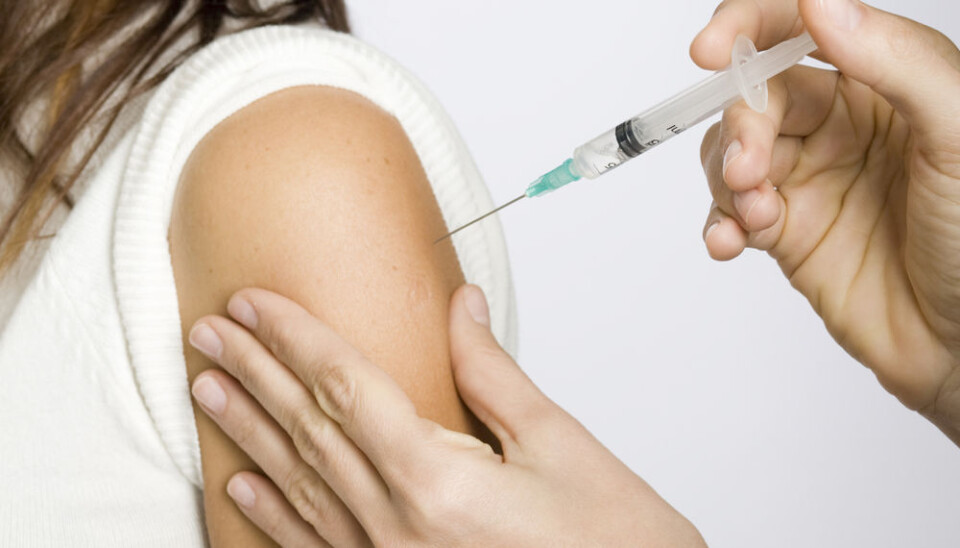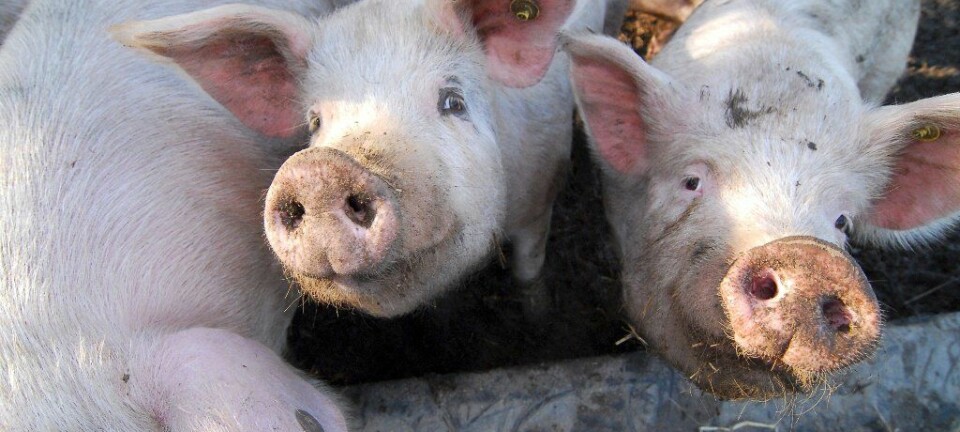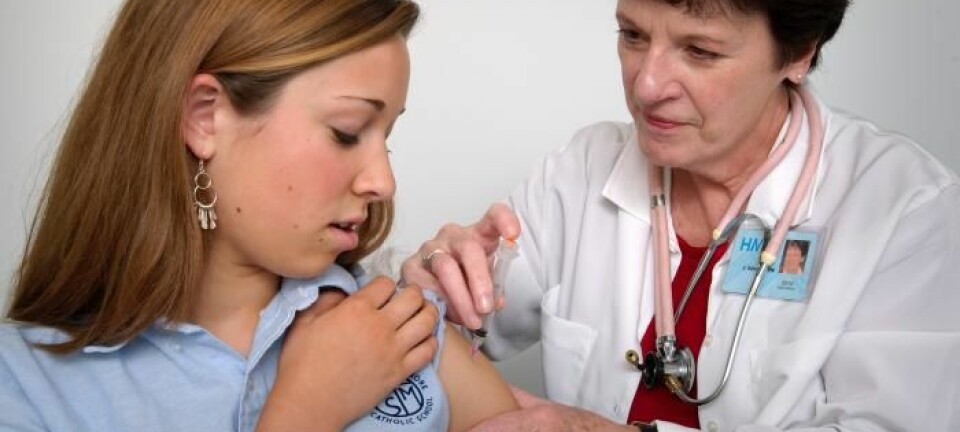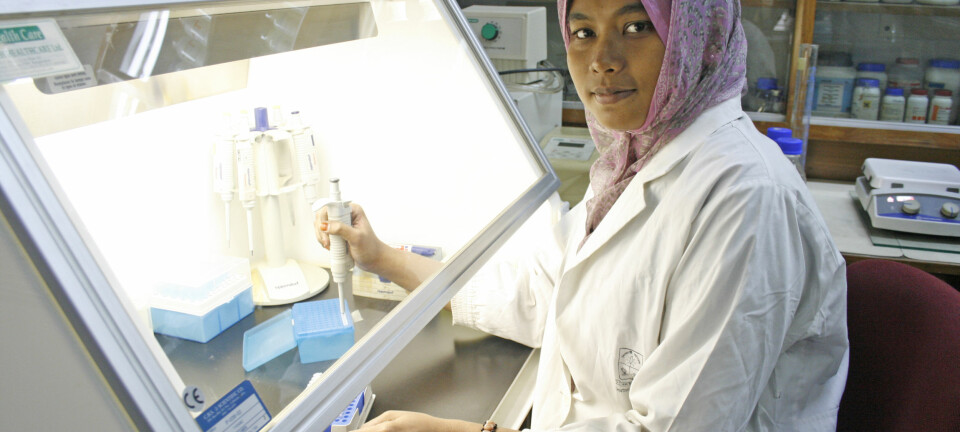
Promising results in bird flu vaccine trials
Danish researchers are working on a bird flu vaccine and expect to have it ready before new types of viruses start to spread from human to human – and not just in the way we’re seeing now, from birds to humans.
A type of bird flu that spread from human to human caused the 1918 flu pandemic in Spain, also known as the Spanish flu. It killed between 20 and 50 million people.
To prevent this from happening again, scientists all over world are working flat out to find vaccines that can fight off these viruses.
Three Danish researchers are currently working on developing a vaccine that is effective against all the variants of influenza, including bird flu.
They have previously identified 34 new pieces of immune-stimulating virus proteins known as peptides. They have also shown that these peptides are capable of binding to 98 percent of the tissue type known as Major Histocompatibility Class I (MHC-I) molecules from human tissue.
Promising candidates for a flu vaccine
We have found some very special influenza peptides that bind to human MHC-I molecules, which activate the organism’s ‘killer T-cells’.
“We have found some very special influenza peptides that bind to human MHC-I molecules, which activate the organism’s ‘killer T-cells’,” says Professor Mogens Helweg Claesson, of the Department of International Health, Immunology and Microbiology at the University of Copenhagen.
”At the same time, the flu peptides bind to Major Histocompatibility Class II (MHC-II) molecules that activate an organism’s ‘helper T cells’. We expect that these double-activating peptides will be optimal vaccine candidates against influenza.”
Together with colleagues Professor Jan Pravsgaard Christensen and research assistant Sara Ram Pedersen, Claesson has started looking at whether the newly-found peptides may form a possible basis for developing a bird flu vaccine.
Influenza is constantly changing
Compared to other viruses, influenza viruses are extremely active and their surface proteins are constantly mutating. This is also the reason why those of us who are vaccinated require a new type of vaccine every year, as the active strain is slightly different from the one used the previous year.
We expect that these double-activating peptides will be optimal vaccine candidates against influenza.
“Since they mutate so quickly, a basis for a vaccine must be based on the conserved internal influenza proteins that do not mutate. And the flu peptides also need to bind to the MHC-I and MHC-II molecules in human tissue,” says Claesson.
He explains that the ultimate goal – the medical dream – is to repeat the global successes in eradicating smallpox, and almost polio too, with influenza vaccines capable of providing global protection.
Claesson has previously been involved in a research project in which a group of people were checked for how their immune system responded to three infectious diseases: tuberculosis, smallpox and influenza. Here, they examined blood samples from healthy middle-aged and elderly people who had been vaccinated against smallpox and tuberculosis as children.
“It turned out that the immune system in these blood donors ‘remembered’ the vaccine extremely effectively and reacted against smallpox and tuberculosis peptides more than 30 years after the donors received the vaccination,” he explains.
Mouse models with an array of possibilities
Before the experiments could get going, a group of mice first had to be genetically manipulated so that they had two of the most prevalent human MHC-I and MHC-II types (HLA-A0201 and HLA DRB1) – tissue types that the selected peptides have been shown to bind to.
The researchers will then look at how their mouse models respond to a vaccine with peptides that bind to both MHC classes.
The next step consists of examining how the mice respond when infected with various influenza viruses, while at the same time being protected with a peptide vaccine. Will the peptide vaccine that binds to both classes of tissue type molecules provide better protection than peptides that only bind to one of the classes of tissue type molecules?
It has taken many phases and many other projects to get the Danish researchers to the current phase in their research. In one of their previous studies they characterised the immunogenic peptides that bind to MHC class I in a vaccine context.
Infection from human to human is the greatest concern
The term ’bird flu’ indicates that the infection travels from birds to people. But in the worst case it appears that the infection can also travel from one human to another human.
”Studies have shown that there are people infected with bird flu, who have not been in close contact with live poultry, but probably with other humans who have been in close contact with live poultry,” says Claesson.
“This is worrying because it could indicate that bird flu may transmit from one human to another. In Asia and in Africa people often live side by side with their poultry or close by, and dust from the birds’ faeces can be enough to spread the virus.”
And this is exactly the point that the researchers worry the most about: that the deadliest versions of bird flu suddenly start to mutate ultra fast and the human-to-human infection accelerates and develops into a pandemic – unless researchers manage to find a way to stop this process.
”This is why scientists across the world are working intensely to find better treatment and a vaccine before the next big flu epidemic.”
In relation to the global aspect, other studies have shown that white people have a different tissue profile from that of non-white people. This is not of much importance to the new Danish project, as Claesson and Christensen have ensured that their tissue samples cover 98 percent of all global tissue types.
---------------------
Read the Danish version of this article at videnskab.dk
Translated by: Dann Vinther
External links
- Mogens Helweg Claesson’s profile (Copenhagen University)
- Jan Pravsgaard Christensen's profile (in Danish only)

















